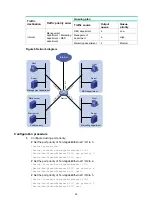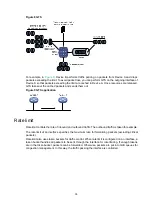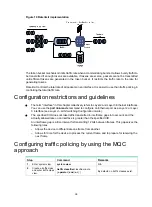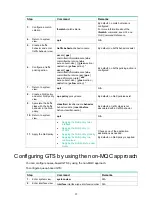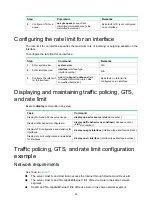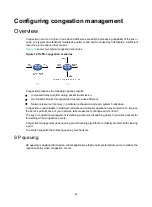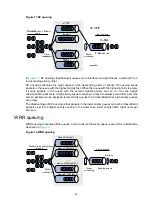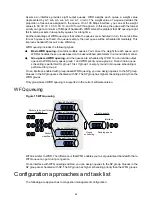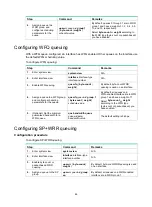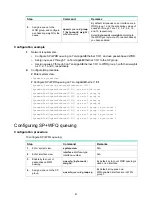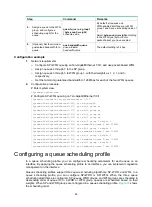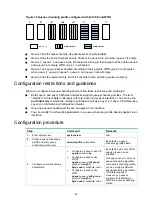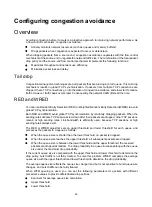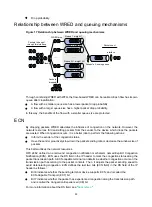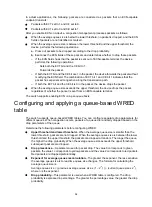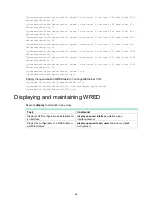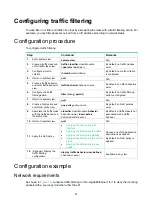
42
Configuring congestion management
Overview
Congestion occurs on a link or node when traffic size exceeds the processing capability of the link or
node. It is typical of a statistical multiplexing network and can be caused by link failures, insufficient
resources, and various other causes.
shows two typical congestion scenarios.
Figure 12 Traffic congestion scenarios
Congestion produces the following negative results:
•
Increased delay and jitter during packet transmission.
•
Decreased network throughput and resource use efficiency.
•
Network resource (memory, in particular) exhaustion and even system breakdown.
Congestion is unavoidable in switched networks and multiuser application environments. To improve
the service performance of your network, take measures to manage and control it.
The key to congestion management is defining a resource dispatching policy to prioritize packets for
forwarding when congestion occurs.
Congestion management uses queuing and scheduling algorithms to classify and sort traffic leaving
a port.
The switch supports the following queuing mechanisms.
SP queuing
SP queuing is designed for mission-critical applications that require preferential service to reduce the
response delay when congestion occurs.
Summary of Contents for FlexFabric 5940 Series
Page 23: ...17 Figure 3 QoS processing flow ...
Page 84: ...78 Figure 26 MPLS label structure ...
Page 91: ...85 Switch burst mode enable ...


